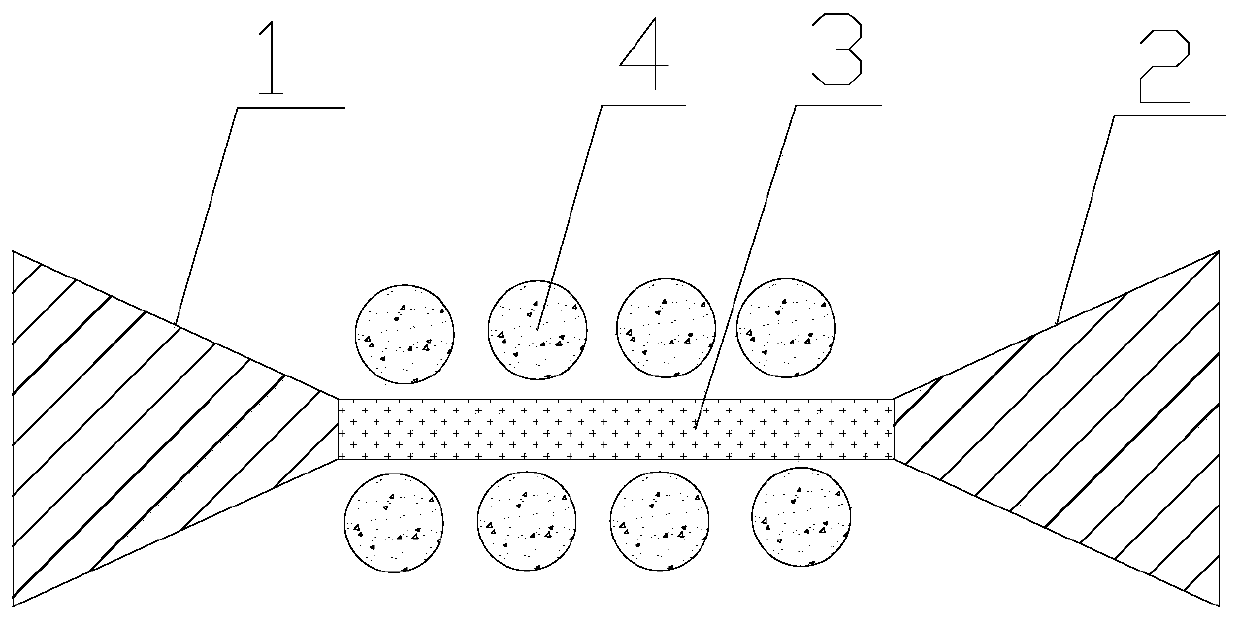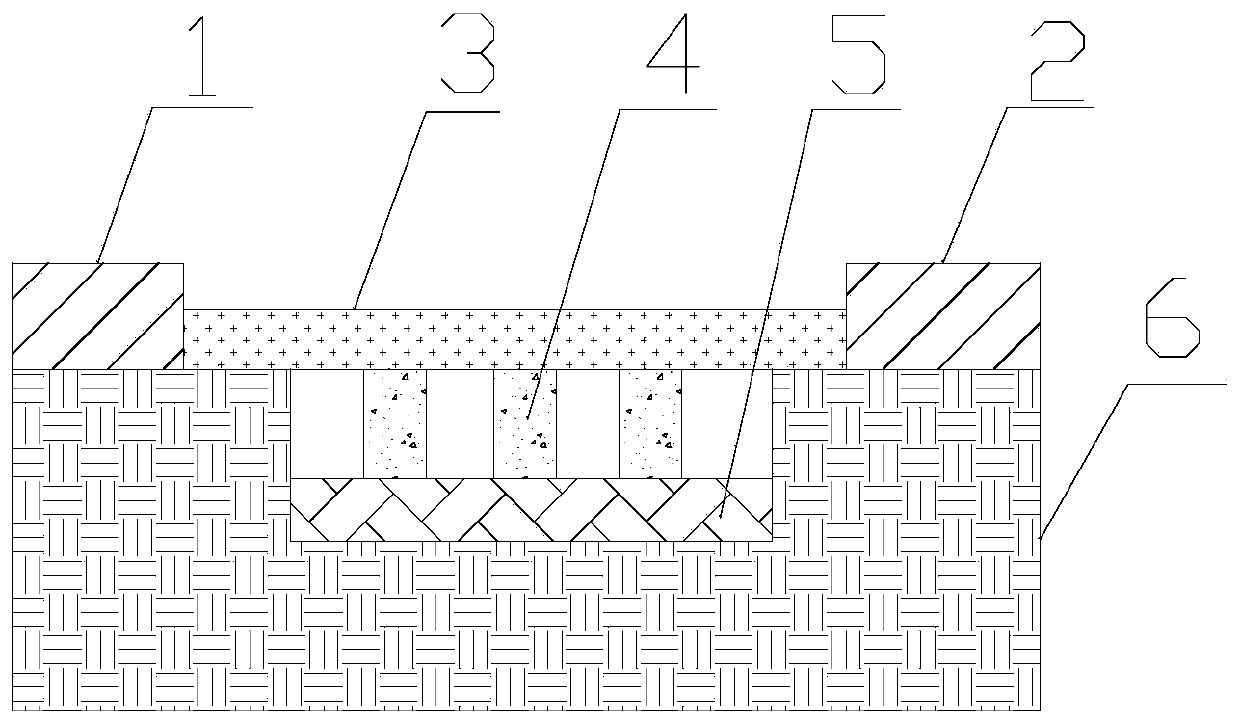Humidity sensor based on molecular device
A technology for humidity sensors and molecular devices, applied in instruments, scientific instruments, analytical materials, etc., can solve problems such as low sensitivity, achieve high sensitivity, high humidity measurement, and expand the detection limit.
- Summary
- Abstract
- Description
- Claims
- Application Information
AI Technical Summary
Problems solved by technology
Method used
Image
Examples
Embodiment 1
[0018] The invention provides a humidity sensor based on molecular devices, such as figure 1 As shown, the humidity sensor includes an electrical insulating layer 6 , a source electrode 1 , a drain electrode 2 , organic molecules 3 , and water-absorbing material particles 4 . The source 1 , drain 2 , organic molecules 3 , and water-absorbing material particles 4 are placed on the electrical insulating layer 6 . The material of the source electrode 1 and the drain electrode 2 is gold or graphene. The organic molecule 3 is dodecyl mercaptan, anthracene mercaptan, and octyl mercaptan. But it is not limited thereto, organic molecules 3 that can be connected between the source electrode 1 and the drain electrode 2 and that can conduct electricity are all within the protection scope of the present invention. The organic molecule 3 extends between the source electrode 1 and the drain electrode 2, and the organic molecule 3 is connected to the source electrode 1 and the drain electr...
Embodiment 2
[0023] On the basis of Example 1, such as figure 2 As shown, the lithium chloride crystals are arranged under the organic molecules 3, and the lithium chloride crystals are not in contact with each other. Lithium chloride crystals are strip-shaped. The direction of the stripes is perpendicular to the connection direction of the source 1 and the drain 2 . That is, the direction of the strip is perpendicular to the paper surface, and the strip-shaped lithium chloride crystal passes through the lower part of the organic molecule 3 . There are gaps between adjacent strip lithium chloride crystals. An insulating porous material 5 is arranged under the lithium chloride crystal. In this embodiment, strip-shaped lithium chloride crystals are selected, which is equivalent to increasing the size or area of the lithium chloride crystals, which helps the lithium chloride crystals to absorb more water. However, when in figure 2 When the size of the lithium chloride crystal is incr...
PUM
| Property | Measurement | Unit |
|---|---|---|
| Particle size | aaaaa | aaaaa |
Abstract
Description
Claims
Application Information
 Login to View More
Login to View More - R&D Engineer
- R&D Manager
- IP Professional
- Industry Leading Data Capabilities
- Powerful AI technology
- Patent DNA Extraction
Browse by: Latest US Patents, China's latest patents, Technical Efficacy Thesaurus, Application Domain, Technology Topic, Popular Technical Reports.
© 2024 PatSnap. All rights reserved.Legal|Privacy policy|Modern Slavery Act Transparency Statement|Sitemap|About US| Contact US: help@patsnap.com









